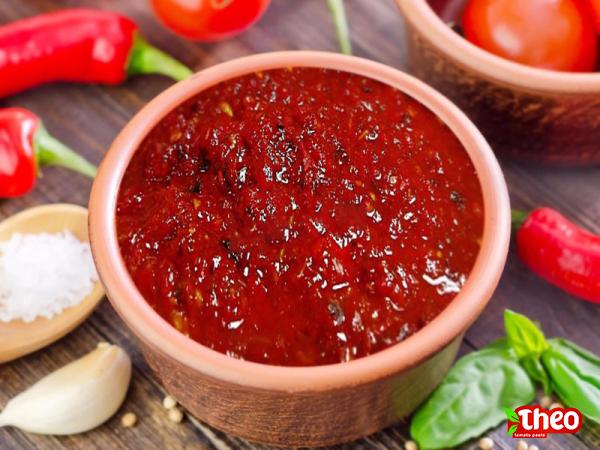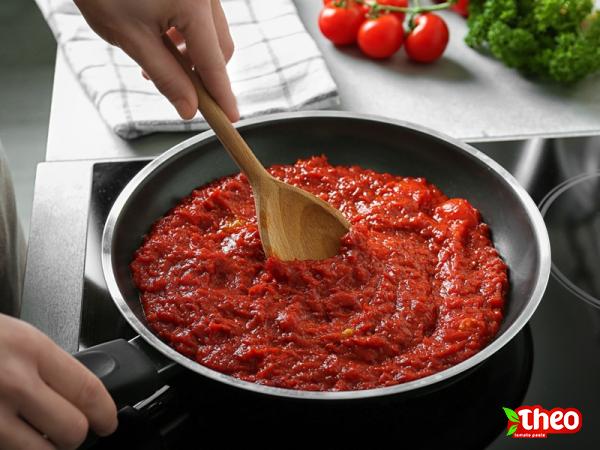Tomato Paste: A Guide to Healthy Purchase and Quality Testing Introduction: Tomato paste is a widely used ingredient in various cuisines around the world. It is concentrated, highly flavorful, and forms the base of many sauces, soups, stews, and other dishes. As consumers increasingly prioritize their health, it is essential to understand how to select high-quality tomato paste that is both nutritious and free from additives or preservatives. This guide aims to provide a summary of factors to consider when purchasing tomato paste, as well as methods to assess its quality. I. Understanding Healthy Purchase Price for Tomato Paste: 1. Organic vs. Conventional Tomato Paste: – Organic tomato paste is grown without synthetic pesticides or fertilizers, and it offers a healthier option for consumers concerned about additives or potential toxic residues. – Conventional tomato paste is often more accessible and cheaper, but it may contain traces of pesticides or toxins. 2. Packaging Options: – Tomato paste can be found in cans, jars, and tubes. Each option has its own advantages and disadvantages. – Canned tomato paste has a longer shelf life and retains its flavor for an extended period. However, it is important to choose cans that are BPA-free to avoid potential health risks. – Glass jars are preferable as they do not introduce any potential chemicals into the paste. Additionally, they allow for easy storage and quick visual assessment of the quality.

tomato paste
 Tubes offer convenience, as they allow for portion control and easy dispensing. However, they may contain additives or preservatives to maintain product integrity. 3. Price and Quality Relationship: – Higher-priced tomato paste options are often associated with better quality or organic certifications. However, it is essential to conduct a thorough assessment beyond price alone to determine the true value. II. Assessing Tomato Paste Quality: 1. Ingredient List and Nutritional Content: – A reputable tomato paste should have minimal ingredients, typically displaying only “tomatoes” or “tomato concentrate” on the label. – Avoid products that contain added sugars, artificial flavors, or preservatives, as these additives can negatively impact both the taste and health benefits of the tomato paste. – Check the nutritional content to ensure the paste is rich in vitamins, minerals, and antioxidants. Higher amounts of lycopene, an antioxidant found in tomatoes, indicate a higher-quality product. 2. Color and Texture: – High-quality tomato paste should have a vibrant red color, indicating its freshness and the absence of excessive heat treatment during processing. – The texture of the paste should be smooth and thick, without any lumps or visible signs of separation. 3. Taste and Aroma: – Taste and aroma are key indicators of tomato paste quality. The flavor should be intense, with a naturally sweet and tangy taste. – Avoid tomato paste with a metallic or artificial taste, as this may indicate the presence of additives or subpar ingredients.
Tubes offer convenience, as they allow for portion control and easy dispensing. However, they may contain additives or preservatives to maintain product integrity. 3. Price and Quality Relationship: – Higher-priced tomato paste options are often associated with better quality or organic certifications. However, it is essential to conduct a thorough assessment beyond price alone to determine the true value. II. Assessing Tomato Paste Quality: 1. Ingredient List and Nutritional Content: – A reputable tomato paste should have minimal ingredients, typically displaying only “tomatoes” or “tomato concentrate” on the label. – Avoid products that contain added sugars, artificial flavors, or preservatives, as these additives can negatively impact both the taste and health benefits of the tomato paste. – Check the nutritional content to ensure the paste is rich in vitamins, minerals, and antioxidants. Higher amounts of lycopene, an antioxidant found in tomatoes, indicate a higher-quality product. 2. Color and Texture: – High-quality tomato paste should have a vibrant red color, indicating its freshness and the absence of excessive heat treatment during processing. – The texture of the paste should be smooth and thick, without any lumps or visible signs of separation. 3. Taste and Aroma: – Taste and aroma are key indicators of tomato paste quality. The flavor should be intense, with a naturally sweet and tangy taste. – Avoid tomato paste with a metallic or artificial taste, as this may indicate the presence of additives or subpar ingredients.
Specifications of tomato paste
 4. Storage and Expiry Dates: – Check the expiry date on the packaging to ensure the product is not expired. – Additionally, pay attention to storage instructions. Some tomato paste brands may require refrigeration after opening, while others can be stored at room temperature. Conclusion: Selecting high-quality tomato paste is crucial for both the flavor of your dishes and the nutritional benefits it provides. When purchasing tomato paste, consider factors such as organic vs. conventional production, packaging options, and the price-quality relationship. Assessing the quality of tomato paste involves examining the ingredient list, nutritional content, color, texture, taste, aroma, and storage information. By following these guidelines, you can confidently choose tomato paste that not only enhances the taste of your recipes but also supports your health and well-being.Tomato Paste: A Guide to Healthy Purchase and Quality Testing I. Understanding Healthy Purchase Price for Tomato Paste: 1. Organic vs. Conventional Tomato Paste: Consumers seeking healthier options may choose organic tomato paste. Organic farming practices prohibit the use of synthetic pesticides or fertilizers, resulting in a product free from toxic residues. Organic tomato paste provides peace of mind for those concerned about potential health risks associated with conventional farming methods. However, it’s important to note that organic options can be more expensive due to the higher cost of production and certification processes. Conventional tomato paste, on the other hand, is more readily available and often cheaper. However, it may contain traces of pesticides or toxins. Consumers who prioritize budget-friendly options may find conventional tomato paste suitable, but it is crucial to conduct quality testing to ensure it meets health standards. 2. Packaging Options: Tomato paste can be found in cans, jars, and tubes, each with its own advantages and disadvantages. Canned tomato paste typically has a longer shelf life and retains its flavor for an extended period. However, it is essential to choose cans that are BPA-free to avoid potential health risks associated with the chemical compound. BPA is known to leach into food items from certain types of can linings. By selecting BPA-free cans, consumers can enjoy the convenience of longer storage without compromising their health. Glass jars are preferable packaging options as they do not introduce any potential chemicals into the tomato paste. Glass containers also allow for easy storage and quick visual assessment of the quality, as any discoloration or sign of spoilage can be easily spotted. However, glass jars may be more fragile, making them less portable. Tubes offer convenience, as they allow for portion control and easy dispensing. They are particularly useful for consumers who only need small quantities of tomato paste for their recipes. However, it is important to carefully read the ingredient list and evaluate the quality of the product inside the tube, as some brands may include additives or preservatives to maintain the paste’s integrity over time.
4. Storage and Expiry Dates: – Check the expiry date on the packaging to ensure the product is not expired. – Additionally, pay attention to storage instructions. Some tomato paste brands may require refrigeration after opening, while others can be stored at room temperature. Conclusion: Selecting high-quality tomato paste is crucial for both the flavor of your dishes and the nutritional benefits it provides. When purchasing tomato paste, consider factors such as organic vs. conventional production, packaging options, and the price-quality relationship. Assessing the quality of tomato paste involves examining the ingredient list, nutritional content, color, texture, taste, aroma, and storage information. By following these guidelines, you can confidently choose tomato paste that not only enhances the taste of your recipes but also supports your health and well-being.Tomato Paste: A Guide to Healthy Purchase and Quality Testing I. Understanding Healthy Purchase Price for Tomato Paste: 1. Organic vs. Conventional Tomato Paste: Consumers seeking healthier options may choose organic tomato paste. Organic farming practices prohibit the use of synthetic pesticides or fertilizers, resulting in a product free from toxic residues. Organic tomato paste provides peace of mind for those concerned about potential health risks associated with conventional farming methods. However, it’s important to note that organic options can be more expensive due to the higher cost of production and certification processes. Conventional tomato paste, on the other hand, is more readily available and often cheaper. However, it may contain traces of pesticides or toxins. Consumers who prioritize budget-friendly options may find conventional tomato paste suitable, but it is crucial to conduct quality testing to ensure it meets health standards. 2. Packaging Options: Tomato paste can be found in cans, jars, and tubes, each with its own advantages and disadvantages. Canned tomato paste typically has a longer shelf life and retains its flavor for an extended period. However, it is essential to choose cans that are BPA-free to avoid potential health risks associated with the chemical compound. BPA is known to leach into food items from certain types of can linings. By selecting BPA-free cans, consumers can enjoy the convenience of longer storage without compromising their health. Glass jars are preferable packaging options as they do not introduce any potential chemicals into the tomato paste. Glass containers also allow for easy storage and quick visual assessment of the quality, as any discoloration or sign of spoilage can be easily spotted. However, glass jars may be more fragile, making them less portable. Tubes offer convenience, as they allow for portion control and easy dispensing. They are particularly useful for consumers who only need small quantities of tomato paste for their recipes. However, it is important to carefully read the ingredient list and evaluate the quality of the product inside the tube, as some brands may include additives or preservatives to maintain the paste’s integrity over time.
buy tomato paste
 3. Price and Quality Relationship: When it comes to tomato paste, higher prices are often associated with better quality or organic certifications. However, it is essential to conduct a thorough assessment beyond price alone to determine the true value of the product. Comparing the ingredient list, nutritional content, and conducting sensory evaluations (such as color, texture, taste, and aroma testing) can help determine whether the higher-priced products justify their price tag. It is crucial to strike a balance between price and quality, ensuring that the chosen tomato paste meets both health and budget requirements. II. Assessing Tomato Paste Quality: 1. Ingredient List and Nutritional Content: A reputable tomato paste should have a straightforward ingredient list, typically displaying only “tomatoes” or “tomato concentrate” on the label. The absence of unnecessary additives, such as added sugars, artificial flavors, or preservatives, ensures the purity of the tomato paste and maintains its health benefits. Consumers should prioritize products with minimal ingredients and avoid those with excessive additives that can negatively impact both the taste and potential nutritional benefits of the tomato paste. Beyond the ingredient list, checking the nutritional content is essential. A high-quality tomato paste should be rich in vitamins, minerals, and antioxidants. One specific antioxidant to look for is lycopene, which is found in tomatoes and has been linked to various health benefits, including reducing the risk of certain diseases. Higher amounts of lycopene indicate a higher-quality tomato paste with potentially greater health benefits. 2. Color and Texture: Color and texture are important indicators of tomato paste quality. High-quality tomato paste should have a vibrant red color, indicating its freshness and the absence of excessive heat treatment during processing. Dull or brownish hues may suggest compromised quality. The texture of tomato paste should be smooth and thick, without any lumps or visible signs of separation. Clumps or watery consistency may indicate poor-quality processing or storage conditions. The paste should have a uniform consistency throughout, making it easy to incorporate into recipes. 3. Taste and Aroma: Taste and aroma are key indicators of tomato paste quality. The flavor should be intense, with a naturally sweet and tangy taste. The paste should not taste metallic or overly artificial, as these characteristics could be indicative of additives or subpar ingredients. It is recommended to conduct a taste test by sampling a small amount of tomato paste before purchasing larger quantities. The aroma of the tomato paste should be fresh and tomato-like. A strong, pleasant aroma suggests a high-quality product, while a weak or unpleasant odor may indicate compromised quality. 4. Storage and Expiry Dates: Checking the expiry date on the packaging is crucial to ensure the product is not expired. Expired tomato paste may pose health risks and could negatively impact the taste and quality of dishes. In addition to the expiry date, it is important to pay attention to storage instructions provided by the manufacturer. Some tomato paste brands may require refrigeration after opening, while others can be stored at room temperature. Follow the suggested storage guidelines to maintain the quality and safety of the tomato paste. Conclusion: Selecting high-quality tomato paste is essential for both the flavor of your dishes and the nutritional benefits it provides. Understanding the differences between organic and conventional options, evaluating packaging choices, and considering the price-quality relationship are vital aspects of making a healthy purchase decision. Assessing tomato paste quality involves examining the ingredient list, nutritional content, color, texture, taste, aroma, as well as checking storage and expiry dates. By following these guidelines, consumers can confidently choose tomato paste that not only enhances the taste of their recipes but also supports their health and well-being.
3. Price and Quality Relationship: When it comes to tomato paste, higher prices are often associated with better quality or organic certifications. However, it is essential to conduct a thorough assessment beyond price alone to determine the true value of the product. Comparing the ingredient list, nutritional content, and conducting sensory evaluations (such as color, texture, taste, and aroma testing) can help determine whether the higher-priced products justify their price tag. It is crucial to strike a balance between price and quality, ensuring that the chosen tomato paste meets both health and budget requirements. II. Assessing Tomato Paste Quality: 1. Ingredient List and Nutritional Content: A reputable tomato paste should have a straightforward ingredient list, typically displaying only “tomatoes” or “tomato concentrate” on the label. The absence of unnecessary additives, such as added sugars, artificial flavors, or preservatives, ensures the purity of the tomato paste and maintains its health benefits. Consumers should prioritize products with minimal ingredients and avoid those with excessive additives that can negatively impact both the taste and potential nutritional benefits of the tomato paste. Beyond the ingredient list, checking the nutritional content is essential. A high-quality tomato paste should be rich in vitamins, minerals, and antioxidants. One specific antioxidant to look for is lycopene, which is found in tomatoes and has been linked to various health benefits, including reducing the risk of certain diseases. Higher amounts of lycopene indicate a higher-quality tomato paste with potentially greater health benefits. 2. Color and Texture: Color and texture are important indicators of tomato paste quality. High-quality tomato paste should have a vibrant red color, indicating its freshness and the absence of excessive heat treatment during processing. Dull or brownish hues may suggest compromised quality. The texture of tomato paste should be smooth and thick, without any lumps or visible signs of separation. Clumps or watery consistency may indicate poor-quality processing or storage conditions. The paste should have a uniform consistency throughout, making it easy to incorporate into recipes. 3. Taste and Aroma: Taste and aroma are key indicators of tomato paste quality. The flavor should be intense, with a naturally sweet and tangy taste. The paste should not taste metallic or overly artificial, as these characteristics could be indicative of additives or subpar ingredients. It is recommended to conduct a taste test by sampling a small amount of tomato paste before purchasing larger quantities. The aroma of the tomato paste should be fresh and tomato-like. A strong, pleasant aroma suggests a high-quality product, while a weak or unpleasant odor may indicate compromised quality. 4. Storage and Expiry Dates: Checking the expiry date on the packaging is crucial to ensure the product is not expired. Expired tomato paste may pose health risks and could negatively impact the taste and quality of dishes. In addition to the expiry date, it is important to pay attention to storage instructions provided by the manufacturer. Some tomato paste brands may require refrigeration after opening, while others can be stored at room temperature. Follow the suggested storage guidelines to maintain the quality and safety of the tomato paste. Conclusion: Selecting high-quality tomato paste is essential for both the flavor of your dishes and the nutritional benefits it provides. Understanding the differences between organic and conventional options, evaluating packaging choices, and considering the price-quality relationship are vital aspects of making a healthy purchase decision. Assessing tomato paste quality involves examining the ingredient list, nutritional content, color, texture, taste, aroma, as well as checking storage and expiry dates. By following these guidelines, consumers can confidently choose tomato paste that not only enhances the taste of their recipes but also supports their health and well-being.




